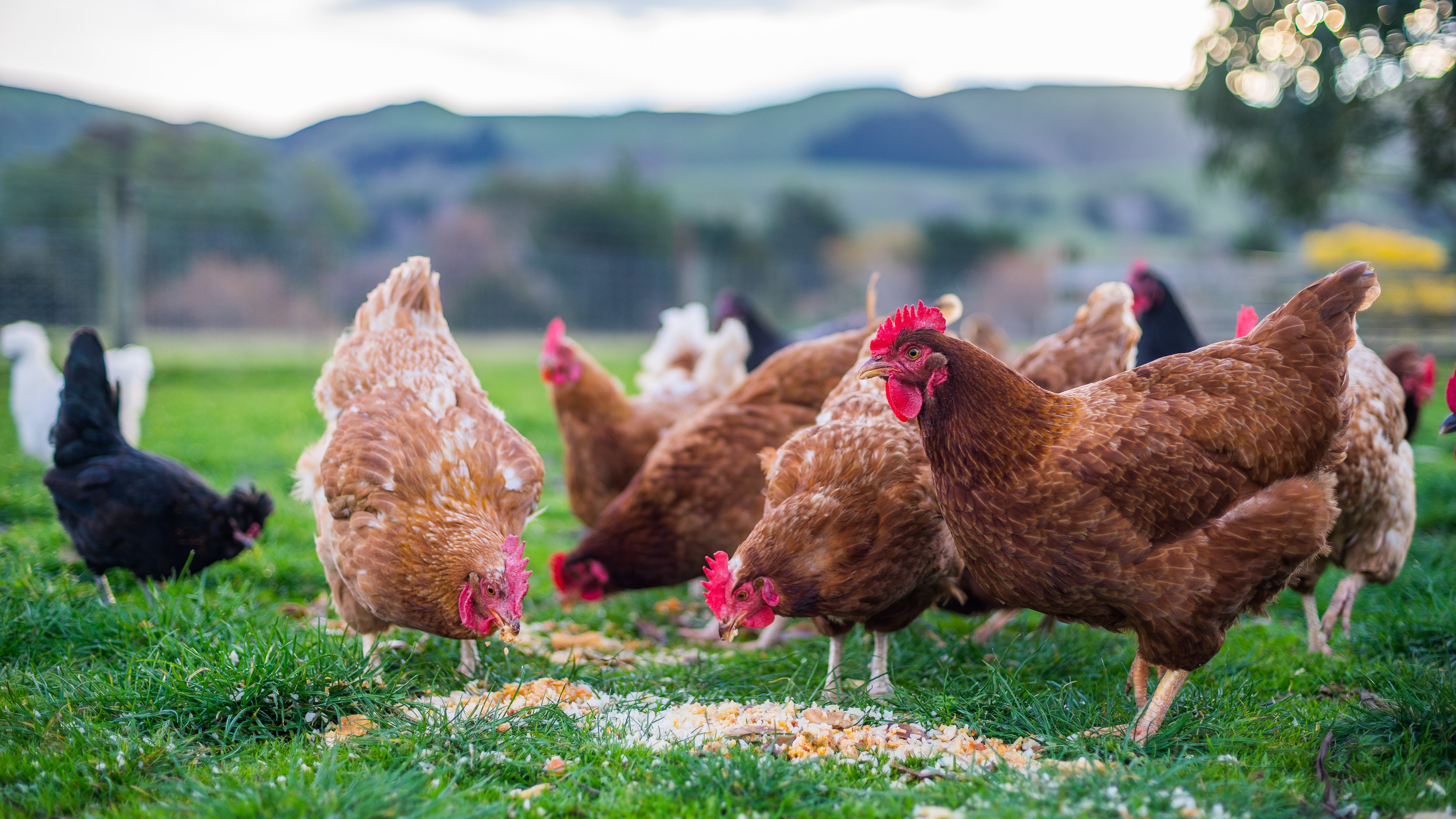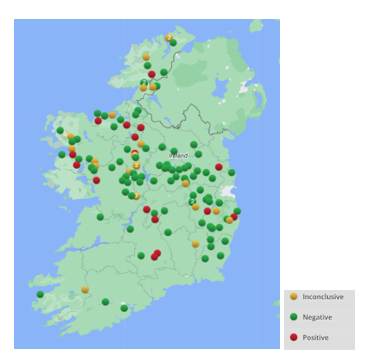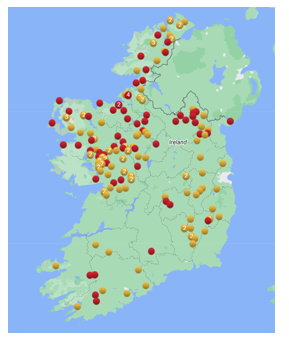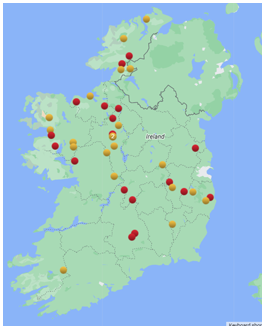Lamb Fluke ELISA October 23
Using abattoir blood samples from slaughtered lambs to detect the timing & spread of fluke infection.
Since 2015, from June to December, DAFM has taken lamb blood samples in factories from a proportion of flocks at the time of slaughter. These have been tested for liver fluke antibodies to determine the timing and geographical spread of liver fluke challenge to grazing lambs.
The number of flocks selected for sampling from each county is intended to be proportionate to the sheep population of that county over the entire sampling period (July to November 2023). A number of samples are taken from each selected flock, and these are pooled at laboratory level. The presence of liver fluke antibodies reflects the level of challenge the lambs have experienced during the most recent grazing season. The presence of liver fluke antibodies in 2023 born lambs is therefore a sentinel for exposure to liver fluke in the wider sheep population in the region, as by definition these lambs must have been exposed during the 2023 grazing season.
Results for July - October 2023
Results for the country for July – October 2023 are as follows:
| Total flocks tested | Positives | % Positives | |
|---|---|---|---|
| July 2023 | 268 | 16 | 5.97% |
| August 2023 | 176 | 25 | 14.2% |
| September 2023 | 179 | 51 | 28.5% |
| October 2023 | 134 | 19 | 14.18% |
Please see maps below (figures 1 and 2) for more detail on the distribution of positive and negative results
Fluke Distribution October 2023
Figure 1: Lamb liver fluke ELISA test results for October 2023. Points have been moved slightly to preserve anonymity of flock owners. (Numbers in the circles indicate more than one sample within this area)
Up to October ’23
October ‘23
Figures 2: Non-negative results from July and October on left compared to non-negative results from October 2023 on the right. Points have been moved slightly to preserve anonymity of flock owners. (Numbers in the circles indicate more than one sample within this area)
In the October testing, 19 flocks were seen to be positive, this month scattered a lot further towards the east and south of the country than in previous months with a high proportion of lambs testing positive fluke in Wicklow along with high fluke numbers, as in previous months, in the West. The highest number of positive cases were recorded in Roscommon and Tipperary which recorded 4 positive cases each, with multiple cases also seen in Donegal, Mayo, Sligo and Wicklow. In addition to this there were 19 inconclusive results recorded country wide. The percentage of negative flocks throughout the country in October was 71%. Counties Carlow, Cavan, Clare, Cork, Dublin, Kilkenny, Laois, Leitrim, Longford, Limerick, Louth, Monaghan, Waterford, Westmeath and Wexford recorded negative fluke results only for this month.
As the sample size for some counties is small, farmers in these particular counties need to be cautious when interpreting the results of the survey as they relate to their areas. Additionally, the county associated with a batch of lambs is that where the flock of submission is registered. In a minority of cases, where the lambs had been purchased shortly before slaughter, the county associated with a batch will not reflect accurately where the batch of lambs spent its life. Absence of inconclusive or positive test results for a particular county should not be taken as conclusive evidence that liver fluke is absent from that county.
If you have any concerns about fluke in your flock please contact your private veterinary practitioner for further advice.
Thanks to Kate O’Keeffe, DAFM blood testing laboratory in Cork, Michael Horan of RAH and Seamus Fagan of Athlone Regional Veterinary Laboratory for the information provided.









